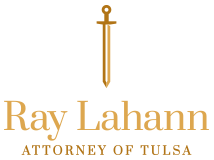During the recent national Stand-Up for Engulfment Prevention Week, the Occupational Safety and Health Administration used the opportunity to remind private grain companies in Oklahoma and other states that the hazards their workers face are as severe as those faced by employees of large grain and feed operations. Part of the focus during this campaign was on the three situations that are the most frequent causes of engulfment injuries. Many of these workplace injuries have tragic consequences.
One hazard is the clogging of unloading equipment. Workers sometimes enter the bins without giving a thought to shutting off the power. What they do not realize is that the grain will move quickly as soon as the debris is removed. Everything in the bin, including the worker, will be forcefully sucked in with the grain flow, and engulfment or entrapment in the unloading device can happen in the blink of an eye.
Bridged grain occurs when the top layer of grain forms a hard crust. Workers may think it is firm enough for them to step onto it, but it could give way and cause an employee to fall into the grain below and face engulfment. Another risky maneuver is to try to break apart clumps of grain sticking to the wall above. Many avalanche entrapment situations have been caused when those clumps were knocked free, only to fall on top of workers.
Grain workers in Oklahoma who are fortunate enough to survive grain engulfment might suffer workplace injuries that require long-term care. The workers’ compensation insurance program offers benefits to help them cope with medical expenses and lost income. Families who have lost loved ones in grain bin accidents can file death benefits claims, which will assist with the funeral and burial costs along with wage replacement to help with day-to-day living expenses. Resources are available to assist with the legalities of such claims.
Source: agriculture.com, “Proper Grain Condition is First Step to Accident Prevention“, Natalina Sents, April 11, 2018

